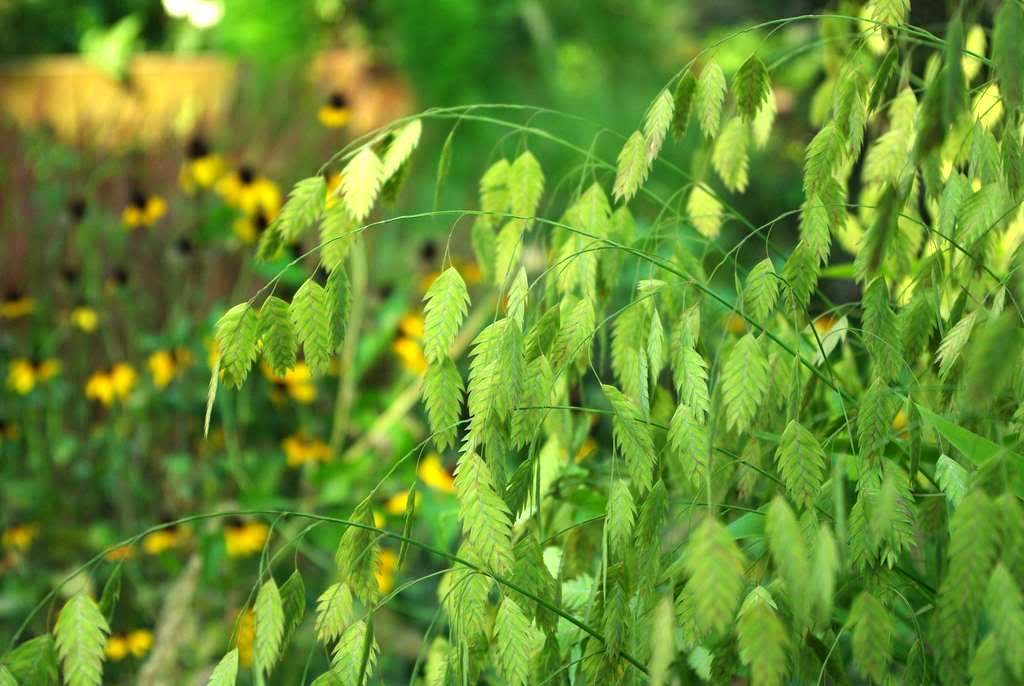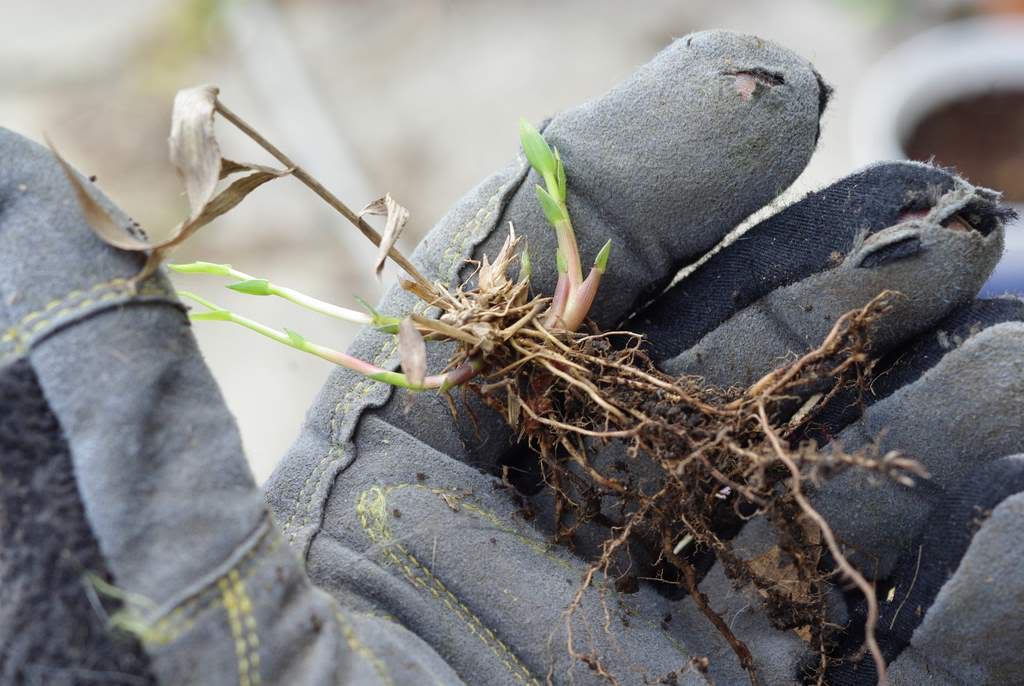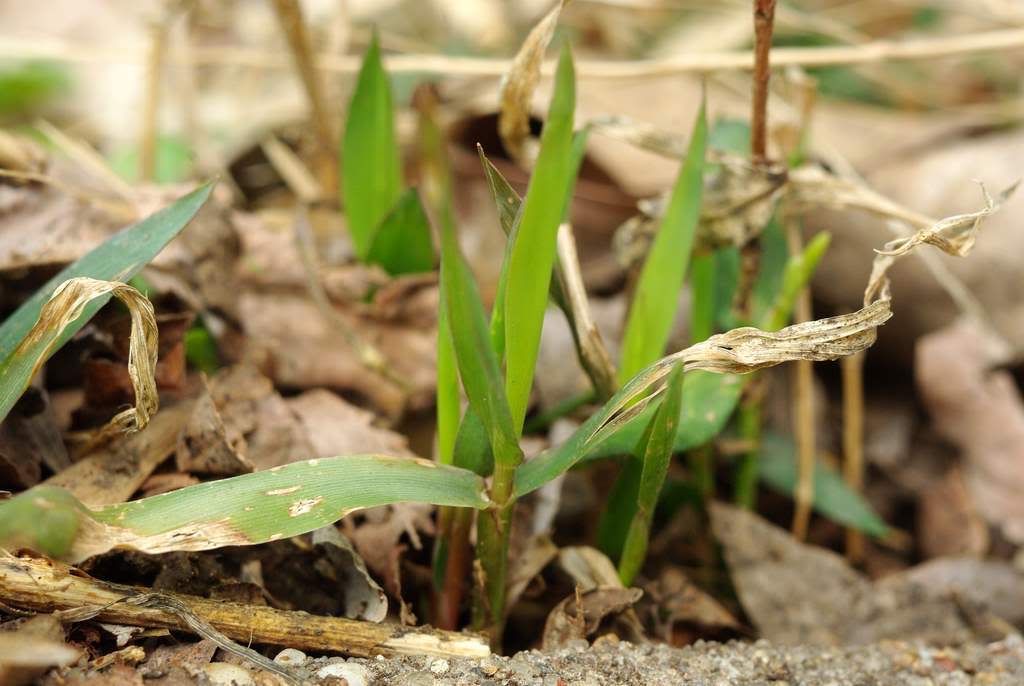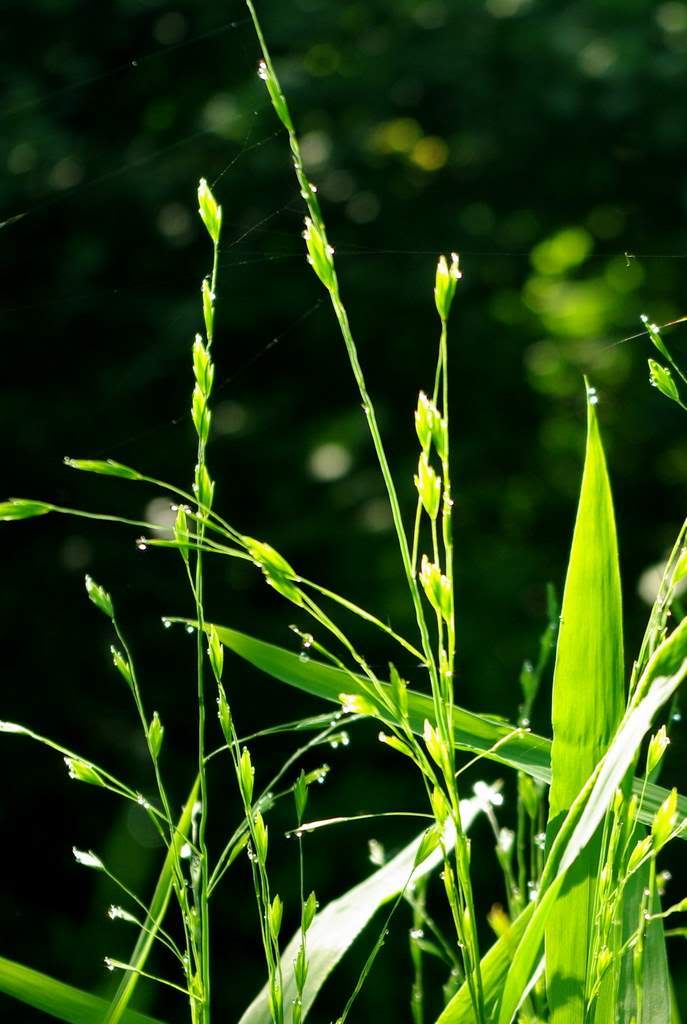Lazy gardening, aka "the hard way"
Today I'm going to talk about mistakes. One mistake in particular. One that I've made before, and swore I wouldn't repeat. Then I repeated it last year. It's a mistake rooted in laziness, or at least a strong lack of desire, and it involves an ornamental grass that you may have some experience with: Chasmanthium latifolium. This plant has so many different common names that I never know how to talk to people about it: "Northern sea oats", "Indian wood oats", "wild oats", "river oats" and several more regional variations. "Northern sea oats" is what it was called when I got it, and that's the name I used for a few years until I read that it doesn't grow anywhere near any sea, and is found instead in woody areas. So "Indian wood oats" sounds like the best candidate for now.
Whatever you call it, this is a great grass which grows in partial shade (like it might get "in the woods") but does better in full sun. Its key feature is the flat, oat-like seed heads it produces, which is the point of this whole post.
Although the seed heads are very attractive, I've learned that this plant reseeds quite easily... too easily.
I wouldn't call it "invasive", but it certainly does produce new plants. I haven't grown it near the lawn, so I don't know if it will reseed into your turf. The seeds are large for grasses, and it seems like they fall pretty much straight down.
So I usually leave the seeds on the plant until sometime in December, then go outside with some pruners and remove all of them.
This isn't one of those plants that drops all of its seed at one time. Instead, the seeds hang on pretty well, falling off throughout the winter as the elements and birds break them loose. So although I want to see the beautiful seeds for as long as possible, I also want to reduce the number of seeds that eventually hit the ground -- so I compromise by removing them in early winter. I leave the foliage though, which is quite bamboo-like.
 |
| A reminder of what they looked like during the summer. |
Since it's now April and I just took these photos, you can see that I was not diligent this year -- I didn't remove any of the seed heads. It's not a big problem right now, as those seeds haven't germinated yet from what I can tell. It will be trouble later this year and next year though.
I already have many seedlings from last year -- even though I trimmed the seed heads -- and they can grow almost anywhere.
 |
| Driveway crack looks like a good place to grow, right? |
They're not too hard to pry out of the ground at this size, but give them another year and you'll be getting out the spade, not the hand trowel to remove them.
So because I got lazy and skipped the first step (timely removal of seed heads), I'm going to pay for it later this year (or next year if I neglect to remove them this summer) with a lot more work getting rid of these seedlings.
 |
| They're easy to remove at this size. |
Will I have learned my lesson? I think so. I hope so.
Just in case I didn't, if January rolls around and I'm showing you beautiful photos of these seed heads in the snow, you have my permission to yell at me in the comments about my laziness and inability to learn from my mistakes.
But January's a long way off, and I get to enjoy these great plants and their seeds for another year now.
.










I knew exactly what your "mistake" was as soon as I saw "northern sea oats" - one of the gardens we take care of has the same problem. Last year I debated taking a seedling home because I think northern sea oats are such a beautiful ornamental grass but I decided not to. This year I will and will make sure I cut it back on time. They are worth it!
You should pot some of those up. I think they'd look great in containers. I love Chasmanthium latifolium, and here in Northern California we're struggling to grow it. I have two plants, and they're no more than 1 1/2 ft. tall. I don't know if it's our climate, or the fact that they're growing in clay.
You were lazy, and your plants grew well. Too well even. Sounds like a win for the oats <_<
It's a crazy gorgeous grass! I wonder if I can find it here.
I moved mine in hopes of keeping it under control but I love the seed heads and did not remove them..we shall see if I too will be digging up the new plantlings...
This is the kind of behavior (on the part of the plants, not yours) that gives grasses in the garden a bad name.
As the saying goes, "Nature abhors a garden."
That being said, I've considered planting some myself in some of my shadier areas.
Oh, oh, I planted this last fall, The River Mist variety. It was so pretty with the green and white stripes, a faint touch of pink, and now I am going to pay.....
Even though I already have an unlimited supply of these, I almost bought the variegated 'River Mist'. They most likely seed regular green though, but you should be able to divide that plant if you want more free ones.
Anne: I'll be glad to send you some if you want -- email me if you're interested. Sooner is better than later before they start taking off in the next couple weeks.
Christine: I'd love to send you some, but I can't send internationally - sorry!
Our version is Inland Sea Oats. Some feel it spreads too easily, but I'm growing it in a certain section of the yard where nothing else will grow -- under the Oak trees. Since Inland Sea Oats seems to do ok there, they can have the whole spot. And that means I don't have to mess with the oak sprouts there, either.